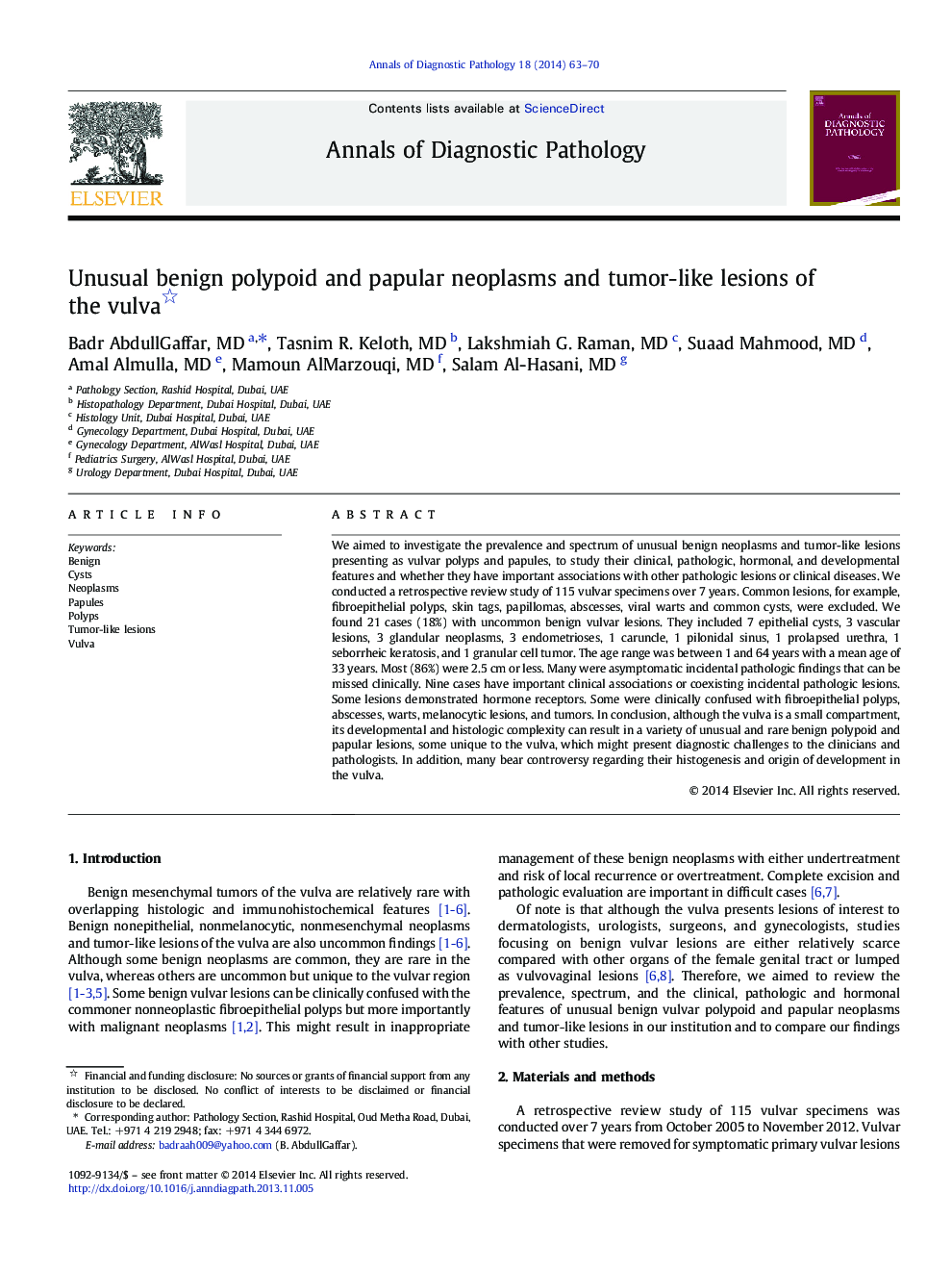| Article ID | Journal | Published Year | Pages | File Type |
|---|---|---|---|---|
| 4129832 | Annals of Diagnostic Pathology | 2014 | 8 Pages |
We aimed to investigate the prevalence and spectrum of unusual benign neoplasms and tumor-like lesions presenting as vulvar polyps and papules, to study their clinical, pathologic, hormonal, and developmental features and whether they have important associations with other pathologic lesions or clinical diseases. We conducted a retrospective review study of 115 vulvar specimens over 7 years. Common lesions, for example, fibroepithelial polyps, skin tags, papillomas, abscesses, viral warts and common cysts, were excluded. We found 21 cases (18%) with uncommon benign vulvar lesions. They included 7 epithelial cysts, 3 vascular lesions, 3 glandular neoplasms, 3 endometrioses, 1 caruncle, 1 pilonidal sinus, 1 prolapsed urethra, 1 seborrheic keratosis, and 1 granular cell tumor. The age range was between 1 and 64 years with a mean age of 33 years. Most (86%) were 2.5 cm or less. Many were asymptomatic incidental pathologic findings that can be missed clinically. Nine cases have important clinical associations or coexisting incidental pathologic lesions. Some lesions demonstrated hormone receptors. Some were clinically confused with fibroepithelial polyps, abscesses, warts, melanocytic lesions, and tumors. In conclusion, although the vulva is a small compartment, its developmental and histologic complexity can result in a variety of unusual and rare benign polypoid and papular lesions, some unique to the vulva, which might present diagnostic challenges to the clinicians and pathologists. In addition, many bear controversy regarding their histogenesis and origin of development in the vulva.
